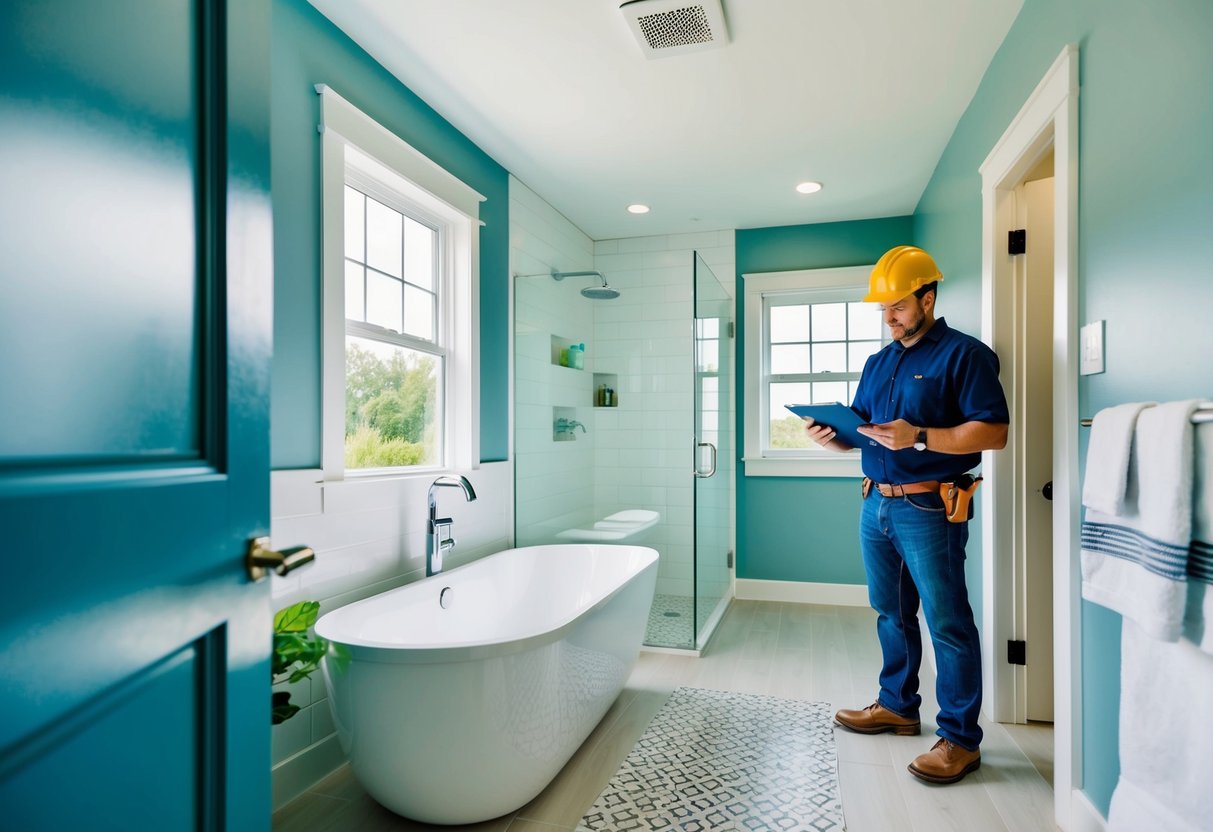Micro-apartments are gaining popularity in Australia’s property market. These tiny living spaces offer a unique investment opportunity for savvy investors.
Micro-apartments can be a good investment, providing high rental yields and low vacancy rates in prime locations.

The demand for micro-apartments has grown, especially since 2020. Many people now prefer living alone in compact spaces rather than sharing larger flats. This shift has caught the eye of property developers and investors alike.
Micro-apartments can cost between $850,000 and $1 million in Sydney. While this may seem steep, it’s close to the median price of a single unit in the city. The difference is that investors can get multiple micro-apartments for this price, potentially boosting their rental income.
Key Takeaways
- Micro-apartments offer high rental yields and low vacancy rates in prime locations
- Demand for micro-apartments has increased since 2020, with many preferring solo living
- Investors can own multiple micro-apartments for the price of a standard unit in major cities
Understanding Micro Apartments

Micro apartments are a growing trend in big cities worldwide. These tiny living spaces offer unique benefits and challenges for both tenants and investors.
Definition and Characteristics
Micro apartments are small, self-contained living units typically ranging from 14 to 32 square metres. They feature a compact design that maximises space efficiency. Most micro apartments include:
- A kitchenette
- A bathroom
- A sleeping area
- Built-in storage solutions
These units often have multi-functional furniture like fold-down beds or extendable tables. Some buildings with micro apartments offer shared amenities like laundry rooms, gyms, or communal spaces to make up for the limited private space.
Global Trends in Micro Living
Micro living is becoming more popular in major cities around the world. Places like New York City, San Francisco, Seattle, and Tokyo are seeing a rise in micro apartment developments. This trend is driven by:
- High housing costs in urban areas
- Growing populations in big cities
- Changing lifestyle preferences
In Australia, cities like Sydney and Melbourne are starting to embrace micro apartments. Developers are creating these small units to meet the demand for affordable housing in prime locations.
Demographics of Micro Apartment Tenants
Micro apartments appeal to a diverse group of tenants. The main groups attracted to this housing option include:
- Young professionals and millennials
- Students
- Single adults
- Retirees looking to downsize
These tenants often prioritise location over space. They’re willing to live in smaller quarters to be close to work, entertainment, and city amenities. Many micro apartment dwellers spend less time at home and more time enjoying the surrounding neighbourhood.
For some, micro living is a short-term solution. Others see it as a long-term lifestyle choice that aligns with minimalist values. The appeal of micro apartments varies based on personal preferences and life stages.
Market Analysis of Micro Apartments
Micro apartments are shaking up the real estate market. These tiny spaces are attracting renters and investors alike. Let’s look at how they stack up against traditional flats and where they’re most in demand.
Rental Market Dynamics
Micro apartments are hot right now. Rents for these small units are often higher per square metre than larger flats. This means more money for landlords. Occupancy rates are high too. In big cities, waiting lists for micro apartments have doubled since 2020.
Young professionals and students love these tiny homes. They’re willing to pay more for a prime spot in the city. This trend is good news for investors. You can expect steady income from these properties.
But watch out for market changes. If too many micro units pop up, rents might drop.
Comparison with Traditional Apartments
Micro apartments cost less to buy than regular flats. This makes them tempting for first-time investors. You can own more units with the same budget.
These tiny flats often have modern designs and smart layouts. They make the most of every centimetre. This appeals to renters who want style without the big price tag.
But micro units aren’t for everyone. Families need more space. This limits your tenant pool. You might see more turnover as renters outgrow the space.
Geographical Demand Variability
Micro apartments shine in big cities. Places like Sydney and Melbourne have the most demand. Renters in these spots are happy to trade space for a great location.
Look for areas near public transport and job hubs. These spots will attract the most renters. Inner-city suburbs are usually safe bets.
But be careful in smaller towns. The market for tiny flats might not be there. Do your research on local demand before investing.
Coastal areas can be tricky too. Holiday rentals might work better there than long-term micro units.
Investment Fundamentals

Micro apartments offer unique investment opportunities in Australia’s property market. These small living spaces can provide strong returns when chosen carefully.
Prospects for Investors
Micro apartments are gaining popularity in major Australian cities. They appeal to single professionals and students who want affordable city living. This demand can lead to high occupancy rates and steady rental income for investors.
In Sydney, micro apartments can cost around $850,000 to $1 million. This is close to the median price of a regular unit. But you can get 8-9 micro units for this amount. This means more rental income from one property.
Melbourne’s median apartment price is $614,299. This is much lower than Sydney’s $848,961. The lower entry cost makes Melbourne an attractive option for micro apartment investors.
Financial Considerations
Micro apartments can offer good returns on investment. Their affordable price tags make them easier to buy than larger properties. This is great for first-time investors or those with smaller budgets.
Rental yields for micro apartments are often higher than for standard units. This is because their rent-to-purchase price ratio is usually better. You can charge a decent rent for a small space in a prime location.
Be aware of body corporate fees. These can eat into your profits. Check the fees before you buy and factor them into your budget.
Risks and Challenges
Micro apartments can be harder to sell than standard units. Not all buyers want such small living spaces. This could make it tough to exit your investment if needed.
Banks might be less keen to lend for micro apartments. They often see them as riskier investments. You might need a bigger deposit or face stricter lending terms.
Changes in rental laws or building regulations could affect your investment. Stay up-to-date with local rules about minimum apartment sizes and rental conditions.
Market saturation is another risk. If too many micro apartments flood the market, it could drive down rents and property values. Research the local market before buying.
Developers’ Perspective

Developers see micro apartments as a way to meet housing needs and boost profits. They’re rethinking design, dealing with rules, and trying new ideas for small living spaces.
Design and Construction
Micro apartments push developers to be clever with space. They pack in smart storage and multi-use areas. Fold-away beds and movable walls are common. Kitchenettes are small but functional. Shared spaces like gyms or lounges make up for less private room.
Builders use pre-fab parts to cut costs and build time. This helps keep prices down for buyers and renters. Quality materials are key to make tiny homes feel luxe.
Regulatory Landscape
Rules can be tricky for micro flats. Some cities have min size limits that block these projects. Others are changing laws to allow smaller homes.
Developers work with councils to show how micro units help housing shortages. They often need to prove their designs are safe and liveable.
Planning for enough parking can be hard. Many projects go up near public transport to skip this issue.
Innovation in Micro Living Spaces
Tech is big in micro flats. Smart home systems control lights, temp, and security. This saves space and energy.
Some developers try co-living setups. These have private rooms but shared kitchens and living areas. It’s a mix of privacy and community.
Virtual reality tours help sell tiny spaces before they’re built. This lets buyers see how they’d live in a small flat.
Developers are also looking at ways to make units flexible. Walls that move or furniture that transforms can change a space as needed.
Alternative Micro Apartment Models

Micro-apartments offer more than just small living spaces. Different models cater to varied needs and investment strategies.
Co-living and Its Impact
Co-living blends private micro-apartments with shared spaces. You get your own bedroom and bathroom, plus access to communal kitchens and lounges. This setup appeals to young professionals and students seeking affordability and community.
For investors, co-living can boost returns. You can fit more units in a building, increasing rental income. Shared amenities also cut down on individual apartment costs.
Co-living spaces often have high occupancy rates. Tenants value the social aspect and convenience. This model can work well in urban areas with lots of young, mobile residents.
But co-living isn’t for everyone. Some people prefer more privacy. You’ll need to weigh the pros and cons for your target market.
Short-Term Rentals and Airbnb
Micro-apartments can be great for short-term rentals. Their compact size suits travellers looking for a place to crash. Platforms like Airbnb make it easy to list and manage these properties.
Short-term rentals can bring in more cash than long-term leases. You can charge higher nightly rates, especially in popular tourist spots. But this comes with more work. You’ll need to clean and prep the space between guests.
Occupancy rates can be less stable with short-term rentals. You might have busy periods and quiet times. It’s crucial to research local tourism patterns and laws about short-term letting.
Some cities have strict rules on Airbnb-style rentals. Make sure you check the regulations in your area before investing.
Frequently Asked Questions
Micro apartments are gaining attention as an investment option. They offer unique advantages and challenges in the property market. Let’s explore some key questions about investing in these compact living spaces.
What are the benefits of investing in micro apartments?
Micro apartments can be a smart investment choice. They often have lower purchase prices than larger flats. This makes it easier to enter the property market. Micro units also tend to have high rental demand in city centres. You can attract tenants who want affordable housing in prime locations.
How does the profitability of micro apartments compare to traditional apartments?
Micro apartments can be quite profitable. They may generate higher rental yields than standard flats. This is because you can fit more units into the same building space. But keep in mind that management costs might be higher. You’ll need to handle more tenants and turnovers in a micro apartment complex.
What should investors consider before purchasing micro apartments?
Location is crucial for micro apartment success. Look for areas with high demand for affordable housing. Check local zoning laws and building codes. Make sure micro units are allowed. Think about the target market. Young professionals and students often prefer these compact spaces.
Can micro apartments provide a viable solution for high-density urban living?
Micro apartments can help ease housing shortages in big cities. They offer affordable options in expensive areas. These small units maximise limited urban space. But they’re not for everyone. Some people find them too cramped for long-term living.
What are the risks associated with investing in micro apartments?
Micro apartments can be a niche market. This might make them harder to sell later. There’s also the risk of changing regulations. Cities might impose new rules on minimum unit sizes. Maintenance costs can add up with more units in a building. And some tenants may not stay long-term in such small spaces.
How might the future urbanisation trends affect micro apartment investments?
Growing cities could boost demand for micro apartments. More single-person households might seek these compact homes.
But remote work trends could reduce city centre appeal.
Keep an eye on local population shifts and housing preferences. These factors will shape the future of micro apartment investments.








